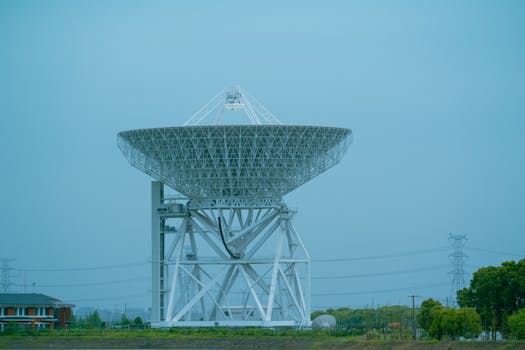Navigating the Skies: Insights into Recent Satellite Telecommunications Innovations

Navigating the Skies: Insights into Recent Satellite Telecommunications Innovations
Navigating the Skies: Insights into Recent Satellite Telecommunications Innovations have transformed the telecommunications landscape, enabling faster and more reliable connections worldwide. The recent advancements in satellite technology have opened up new opportunities for remote communication, navigation, and data transfer. In this article, we will delve into the latest innovations in satellite telecommunications and their significant impact on the industry.
Satellite telecommunications have come a long way since the launch of the first commercial communications satellite, Intelsat 1, in 1965. Over the years, satellite technology has improved significantly, with advancements in areas such as signal processing, antenna design, and propulsion systems. The development of new satellite constellations, such as OneWeb and Starlink, has further accelerated the growth of the satellite telecommunications industry.
Recent Advancements in Satellite Technology
Recent years have seen significant advancements in satellite technology, including the development of high-throughput satellites (HTS), which offer faster data transfer rates and greater connectivity. HTS satellites use multiple spot beams to provide higher bandwidth and more efficient use of spectrum. This has enabled the delivery of high-speed broadband services, including 5G networks, to remote and underserved areas.
Another significant development is the use of phased arrays and digital beamforming, which allow for more precise control over satellite signals and improved performance. Phased arrays use multiple small antennas to steer and shape the beam, enabling more efficient use of spectrum and improved interference mitigation. Digital beamforming, on the other hand, uses software to control the beam, allowing for greater flexibility and adaptability.
Impact of Satellite Telecommunications Innovations
The recent innovations in satellite telecommunications have had a profound impact on the industry, enabling new applications and services, such as satellite-based 5G networks, IoT connectivity, and precision agriculture. Satellite-based 5G networks, for example, can provide high-speed broadband services to remote areas, enabling the delivery of critical services such as healthcare, education, and emergency response.
Satellite telecommunications have also enabled the development of new IoT applications, such as smart cities, industrial automation, and environmental monitoring. Satellite-based IoT connectivity can provide real-time monitoring and control of remote assets, enabling more efficient use of resources and improved decision-making.
Future of Satellite Telecommunications
The future of satellite telecommunications looks promising, with ongoing research and development in areas such as quantum communications, artificial intelligence, and machine learning. Quantum communications, for example, can provide secure and encrypted communication over satellite links, enabling the protection of sensitive information.
Artificial intelligence and machine learning can also be used to improve the performance and efficiency of satellite telecommunications systems, enabling real-time optimization of satellite resources and improved interference mitigation. The integration of satellite and terrestrial networks can also provide more seamless and efficient communication services, enabling the delivery of high-speed broadband services to a wider range of users.




